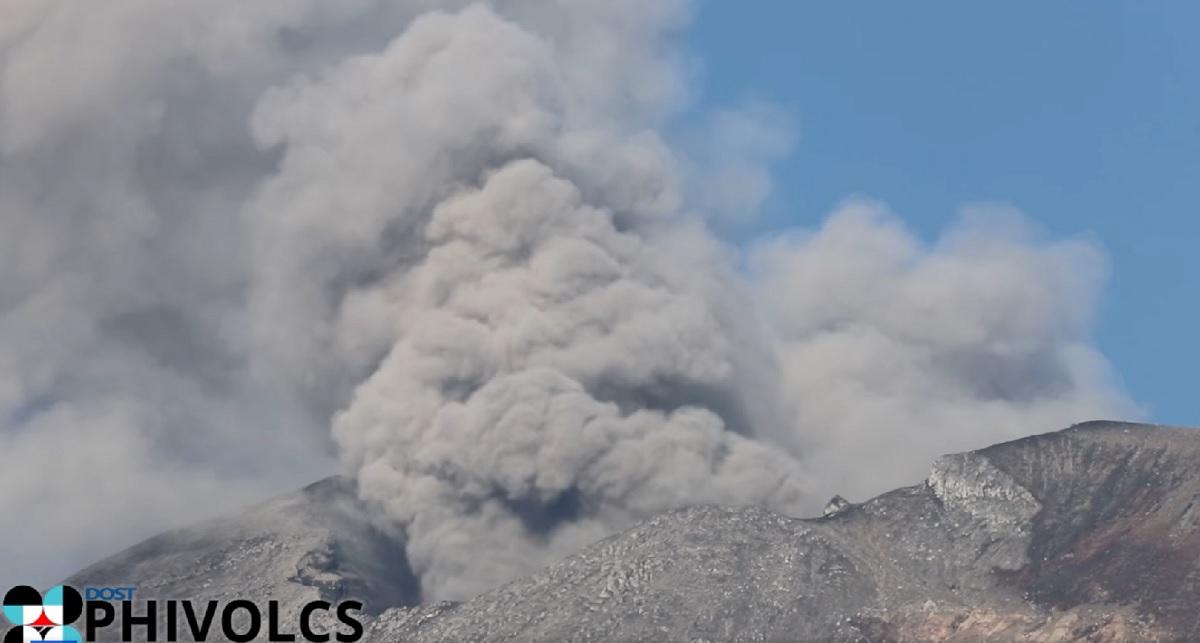Changing Skies Over Negros: Kanlaon Volcano‘s Activity Intensifies
Kanlaon Volcano on Negros Island continues to exhibit increased activity, raising concerns among scientists and local authorities. The Philippine Institute of Volcanology and Seismology (PHIVOLCS) reported on Wednesday that the volcano has been steadily degassing and occasionally releasing ash plumes since October 19. With the situation evolving rapidly, experts are closely monitoring the potential for further explosive activity.
Key Developments and Observations
On November 12, PHIVOLCS documented a “voluminous” ash plume that rose approximately 800 meters into the atmosphere before drifting toward the north and southwest. The monitoring efforts revealed that the volcano emitted an alarming 2,125 tonnes of sulfur dioxide that same day. Meanwhile, seven volcanic earthquakes were recorded near the site, signaling elevated unrest.
PHIVOLCS has raised the alert level to 2, indicating a state of increased volcanic activity following Kanlaon’s previous explosive eruption on June 3. “The current unrest suggests that we could see sudden steam-driven or phreatic eruptions at any moment,” cautioned a PHIVOLCS representative. “Safety protocols are in place to protect local communities and air traffic.”
Why Continuous Monitoring is Crucial
The volcanic ash emissions have drawn attention not only for their immediate impact but also for their long-term implications. The ash produced is primarily composed of pulverized old rock rather than new magma, based on microscopic examinations of samples taken from recent emissions. This information is vital for understanding the volcano’s behavior and predicting potential hazards.
Since the volcano began showing signs of unrest nearly a month ago, the risk of unexpected eruptions remains. The threshold for entry into the volcano’s permanent danger zone, which encompasses a 4-kilometer radius, has been set strictly to ensure public safety.
Technological Implications
As technology enthusiasts and professionals often look towards innovations that can help mitigate natural disasters, this situation presents an interesting case study. Remote sensing and satellite imagery play crucial roles in monitoring volcanic activity. For instance, NASA’s Earth Observing System can track the plume’s movement and analyze ash density, providing invaluable data to PHIVOLCS and local authorities.
In the field of technology, the challenge posed by volcanic eruptions can lead to advancements in both the predictive modeling of such natural events and improvements in community preparedness strategies. Companies working on disaster management technologies can leverage this knowledge to develop better response plans that incorporate real-time data.
Expert Insights and Community Preparedness
Experts highlight the importance of community awareness and preparation in mitigating the risks associated with volcanic eruptions. Local authorities are continually updating safety measures and public advisories to keep residents informed.
“The integration of technology into the safety protocols has markedly increased our ability to predict and respond to volcanic events. However, community engagement and education are equally critical,” noted Dr. Amado Desta, a volcanologist with PHIVOLCS.
The Bigger Picture: Historical Context
Kanlaon Volcano’s history is marked by periods of eruption and dormancy, extending back thousands of years. The volcano is one of the most active in the Philippines, and its robust activity is often a reminder of the powerful forces of nature that can shape the environment.
As researchers examine the geological history of Kanlaon, they gather insights that help in understanding its future behavior. This vigilance is particularly significant for the surrounding communities that rely on agriculture, tourism, and other industries sensitive to volcanic activity.
Preventive Measures in Action
In response to the heightened activity, PHIVOLCS has implemented several preventive measures:
- Restricted Areas: Access to a 4-kilometer danger zone around the volcano is strictly prohibited.
- Air Traffic Regulations: Flying near the volcano is limited to ensure aircraft safety from ash plumes.
- Continuous Observations: Monitoring teams are stationed at various points to track seismic and volcanic activity in real-time.
Engaging the Community
The situation at Kanlaon Volcano serves as a reminder of nature’s volatility and the importance of preparedness. By leveraging technology and fostering community awareness, local and international agencies can work towards minimizing disaster risks.
As the scenario continues to develop, we encourage readers to stay informed and share their thoughts on safety strategies and technology’s role in disaster management. What are your views on how communities can better prepare for volcanic activity?
For additional insights on volcanic activity and technology’s role in disaster management, be sure to check out detailed analysis from sources like TechCrunch and The Verge.
This article offers an informative perspective while engaging with the audience to foster dialogue around preparedness and technological innovations in disaster management. For further updates, stay tuned to Shorty-News.


